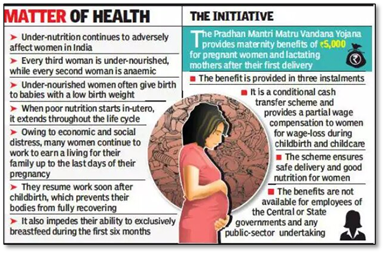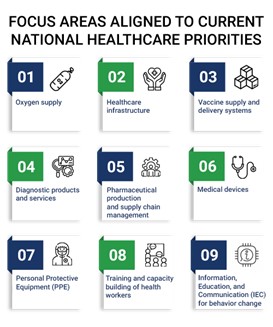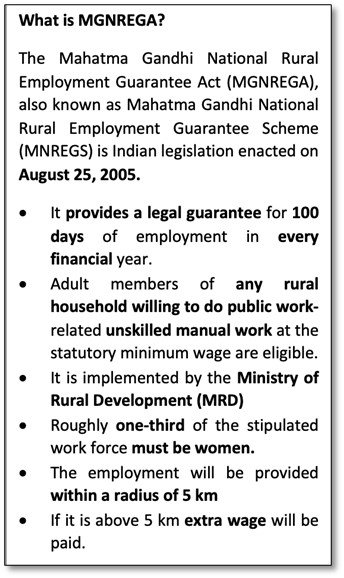Wednesday, 16th February 2022
Aadhaar details of PMJAY beneficiaries
In News
States and Union Territories have flagged their concerns over sharing Aadhaar details of Pradhan Mantri Jan Arogya Yojana (PMJAY) beneficiaries.
About the News
- The concern is over sharing of Aadhaar details of National Food Security Act (NFSA) beneficiaries with the National Health Authority (NHA).
- Due to deficiencies in the SECC database, beneficiary identification under Ayushman Bharat-Pradhan Mantri Jan Arogya Yojana (AB-PMJAY) has become extremely difficult.
- Therefore, in order to map the Socio-Economic and Caste Census (SECC) to target the beneficiaries, the centre had asked the states and UTs to share these details.
- To this, the states have flagged concerns about the "security aspects of such a data transfer" and also the possibility of the Centre "using it for political gains.
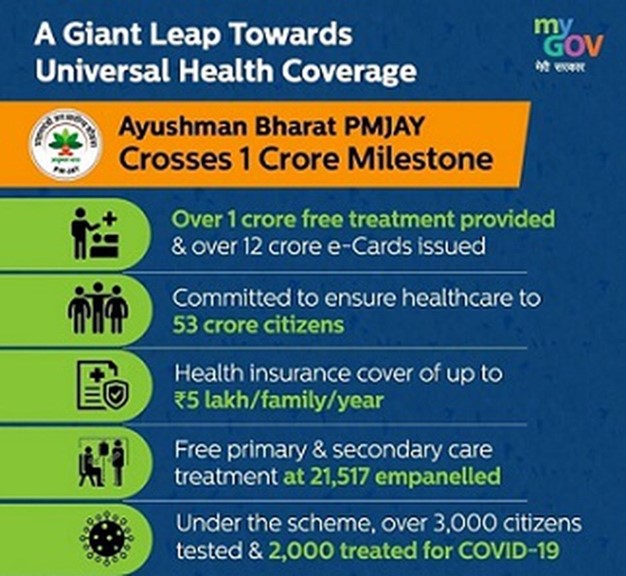
Pradhan Mantri Jan Arogya Yojana (PM-JAY)
- This scheme was launched in 2018, to provide health coverage of up to Rs 5 lakh per annum per beneficiary family to around 10.74 crore poor and vulnerable families.
- The beneficiaries are identified from SECC data of 2011 on the basis of select deprivation and occupational criteria across both rural and urban areas.
- PM-JAY was earlier known as the National Health Protection Scheme (NHPS) before being rechristened. It subsumed the then existing Rashtriya Swasthya Bima Yojana (RSBY).
- The AB-PMJAY is implemented in all states and UTs, except West Bengal, NCT of Delhi and Odisha.
- PM-JAY is fully funded by the Government and cost of implementation is shared between the Central and State Governments.
- PM-JAY is the world's largest health insurance/ assurance scheme fully financed by the government.
- PM-JAY provides cashless access to health care services for the beneficiary at the point of service, that is, the hospital.
- It covers up to 3 days of pre-hospitalization and 15 days post-hospitalization expenses such as diagnostics and medicines. There is no restriction on the family size, age or gender.

Articles related to the topic can be read from the following:
- https://edukemy.com/current-affairs/gazette/2021-12-23/data-protection-in-india
- https://edukemy.com/current-affairs/gazette/2021-11-03/state-and-cyber-surveillance-the-sc-judgement
- https://edukemy.com/current-affairs/gazette/2021-11-23/jpc-recommendations-on-draft-personal-data-protection-pdp-bill-2019
Source:
- States flag 'privacy' concerns over sharing Aadhaar details of PMJAY beneficiaries: Report
- AYUSHMAN BHARAT PRADHAN MANTRI JAN AROGYA YOJANA
Image source:
Scheme for Enhancement of Competitiveness of the Capital Goods Sector
In News
The Union Government has notified second phase of the scheme for enhancement of competitiveness in the capital goods sector with a financial outlay of ₹1,207 crore.
Phase I of the Scheme for Enhancement of Competitiveness of the Capital Goods Sector
- It was launched by the Department of Heavy Industry (DoHI) in 2014 November to improve technology depth in the sector while also reducing the infrastructure costs.
- Physical Targets: To set up Centres of Excellence (CoE) for Technology Development, Integrated Industrial Infrastructural Facility (IIIF), Common Engineering Facility Centre (CEFC) and Test & Certification Centre (T&CC). The Scheme also has a financial component namely Technology Acquisition Fund Programme (TAFP) for Technology acquisition/ transfer in Capital Goods Sector.
- Achievements:
- 8 CoE, 9 CEFC including four SAMARTH Udyog centres for Industry have been established at research and academic institutes of eminence across the country.
- Ministry has established six Technology Platforms which shall be accelerators for making India self-reliant in Capital Goods Sector and Auto Sector with focus on developing mother technologies.
Phase II of the Scheme for Enhancement of Competitiveness of the Capital Goods Sector
The overall financial outlay would consist of a budgetary support from the government of ₹975 crore and the rest of ₹232 crore would come through the industry contribution.
- Objectives of the Scheme:
- The objective of Phase II of the Scheme is to expand and enlarge the impact created by Phase I pilot scheme.
- This will be done by creation of a strong and globally competitive capital goods sector that contributes at least 25% to the manufacturing sector.
- Components of the Scheme:
- Identification of Technologies through Technology Innovation Portals.
- Setting up of four New Advanced Centres of Excellence and augmentation of Existing Centres of Excellence.
- Promotion of skilling in Capital Goods Sector–creation of Qualification packages for skill levels 6 and above.
- Setting up of four Common Engineering Facility Centres (CEFCs) and augmentation of existing CEFCs.
- Augmentation of Existing Testing and Certification Centres.
- Setting up of ten Industry Accelerators for Technology Development.

Articles related to this topic can be read from the following:
- https://edukemy.com/current-affairs/gazette/2021-08-31/quality-control-curbs-to-stop-low-grade-imports
- https://edukemy.com/current-affairs/gazette/2022-01-10/bis-completes-75-years
- https://edukemy.com/current-affairs/gazette/2021-06-03/bis-sdo-recognition-scheme
Sources:
- Rs.54.22 crore utilized under the Scheme on ‘Enhancement of Competitiveness in Indian Capital Goods Sector in the financial year 2020-21:
- Achievements of the last 48 Months for the Ministry of Heavy Industries and Public Sector Enterprises
- Enhancement of competitiveness in the Indian Capital Goods Sector:
- Govt notifies phase 2 of scheme to boost competitiveness in capital goods sector:
Occupational Safety
In News
Safe in India (SII) has recently released the CRUSHED Report 2021 on ‘Occupational safety’ in India.
About the News
- As per the report, while industrial accidents often occur, only major accidents — say in construction or in a hazardous industry — are reported in Indi The situation is more dismal in the auto sector.
- There are two primary requirements to ensure safe workplaces, viz. a strong monitoring (inspections) and comprehensive database to frame corrective actions and policies.
- Occupational safety and health (OSH) have however not received due attention from law-makers and even trade unions in India.
What are the major findings of the report?
- Under reporting: Massive under-reporting of industrial injuries occurring in Haryana with on average 500 workers have received nonfatal injuries.
- Shortage in workforce: The proportion of working in sanctioned posts for factory inspectors (employment rate) for India was 70.60% but it was 93% for Maharashtra, 57.52% for Gujarat and 47.62% for Bihar.
- Few inspections: The proportion of registered factories inspected (inspection rates) for all-India declined from 36.23% during 2008-11 to 34.65% during 2012-2015.

What are the major issues with occupational safety in India?
- Narrow spectrum of Data collection:
- Few sectors: Labour bureau compiles and publishes data on industrial injuries relating only to a few sectors, viz. factories, mines, railways, docks and ports. Also, the data is not representative of the situation in India as several major States including Delhi, Gujarat, Kerala etc. have default
- Data on States: The States’ data are more likely to suffer from underreporting in case of non-fatal injuries than fatal ones. The under-reporting of industrial injuries, unlike for strikes and lockouts, is a far more serious issue and cause for grave concern.
- Poor factory inspections and convictions: Factory inspectorates are inadequately equipped and worse with very poor inspection rates. Inspectors cannot feasibly inspect every factory, so they used their “discretion” to target the “easy” factories to demand compromising payments. Many of them belong to the powerful industry groups which have successfully lobbied against the inspection system.
- Legal and labour policy aspects: Liberalisation of the inspection system does not promote sound labour market Annual returns and self-certification systems weakens the already poorly placed labour statistical system regarding all variables — especially industrial injuries.
- Violation of commitment: While India has ratified International Labour Organization (ILO) conventions, the Labour Inspection Convention, 1947 (C081) and Labour Statistics Convention, 1985 (C160), such defects only violates the conventions.
Sources:
Kyoto Protocol
On 16 February 2005 Kyoto Protocol entered into force. Currently, there are 192 Parties to the Kyoto Protocol. Kyoto Protocol operationalizes the United Nations Framework Convention on Climate Change by committing industrialized countries and economies in transition to limit and reduce greenhouse gases (GHG) emissions in accordance with agreed individual targets. The Kyoto Protocol is based on the principles and provisions of the Convention and follows its annex-based structure. It only binds developed countries, and places a heavier burden on them under the principle of “common but differentiated responsibility and respective capabilities”. Under the Protocol, countries must meet their targets primarily through national measures. However, the Protocol also offers them an additional means to meet their targets by way of three market-based mechanisms: International Emissions Trading, Clean Development Mechanism (CDM) and Joint implementation (JI).

Sources:
Agriculture Mechanization
In News
The Union Ministry of Agriculture and Farmers Welfare amended the guidelines of “Sub-Mission on Agricultural Mechanization” (SMAM) to promote Drone use in Agriculture.
Details of the Amended Guidelines
- Financial Grants: It envisages granting upto 100% of the cost of agriculture drone or Rs. 10 lakhs, whichever is less, as grant for purchase of drones by the Farm Machinery Training & Testing Institutes, ICAR institutes, Krishi Vigyan Kendras and State Agriculture Universities.
- Support to FPOs: The Farmers Producers Organizations (FPOs) would be eligible to receive grant up to 75% of the cost of agriculture drone for its demonstrations on the farmers’ fields.
- Support to hire drones: A contingency expenditure of Rs.6000 per hectare would be provided to hire drones for demonstrations from Custom Hiring Centres (CHCs), Hi-tech Hubs, Drone Manufacturers and Start-Ups.
- Timeline for financial support: Financial assistance and grants would be available until March 31, 2023.
- In order to provide agricultural services through drone application, 40% of the basic cost of drone and its attachments or Rs.4 lakhs, whichever less would be available as financial assistance for drone purchase by existing Custom Hiring Centers which are set up by Cooperative Society of Farmers, FPOs and Rural entrepreneurs.
- Attracting Skilled Human Resource: Agriculture graduates establishing CHCs would be eligible to receive 50% of the basic cost of drone and its attachments or up to Rs.5 lakhs in grant support for drone purchases.
- Eligibility: Rural entrepreneurs should have passed class tenth examination or its equivalent; and should have remote pilot license from Institute specified by the Director General of Civil Aviation (DGCA) or from any authorized remote pilot training organization.

Significance of the Guidelines
- The subsidized purchase of agriculture drones for CHCs/Hi-tech Hubs will make the technology affordable, resulting in their widespread adoption.
- This would make drones more accessible to the common man in India and will also significantly encourage domestic drone production.
- It will also give a major boost to promote precision farming in India.
Need for mechanizing farm operations in Indian agriculture
Farm mechanization provides several economic and social benefits to the farmers.
- It saves inputs like seeds and fertilizers up to 15–20% and labour requirement and operational time by 20–30%.
- On the other hand, it increases cropping intensity by 5–20% and crop productivity by 10–15%.
- It helps in encouraging the rural youth to join agriculture as a profession and attract people to work in the field.

Current status of the farm mechanisation sector and trends
- The operation-wise farm mechanization level in the country is about 40% for tillage and seedbed preparation, 29% for seeding and planting, 35-45% for plant protection, 60-70% for harvesting and threshing for wheat and rice and below 15% for other crops.
- The availability of farm power has increased from 0.28 kW/ha in 1960–61 to 2.10 kW/ha in 2013-14 and expected to increase to 5.17 kW/ha by 2032–33.
- The two major segments of equipment, tractor and power tillers have shown a constant growth over the years. India is considered to be the largest tractor market worldwide.
Regional Pattern of Farm mechanisation
- Northern states (Punjab, Haryana and western Uttar Pradesh) have higher level of farm mechanization (70-80% overall and 80-90% for rice and wheat) because of highly productive land, declining agricultural labour force and support from state governments.
- States in eastern and southern part of the country have lower level of farm mechanization (35-45%) because of smaller and more fragmented land holdings.
- States in north-eastern part have very low level of farm mechanization mainly because of hilly topography, higher transportation cost of farm equipment, and farmers’ socioeconomic conditions.
Key growth drivers of farm mechanisation in India

Sectoral constraints and key challenges to Farm Mechanisation
- Operational constraints: Operational constraints comprise fragmented landholdings, diverse soil conditions and cropping pattern, supply-demand mismatch, dismal farm power availability (FPA) in many states, tractorisation, quality and serviceability constraints, inefficiencies in farm equipment testing, etc.
- Financial constraints: Financial constraints constitute of poor access to finance, high cost of precision equipment and a subsidy-boosted market with low demand drive.
- Policy-related constraints: It includes poor implementation of government support programmes and inefficiencies associated with DBT and subsidy disbursal.
- Capacity-building constraints: These comprise of insufficient trainings and awareness related issues, lack of skilled manpower in usage of high cost farm machinery, etc.

Conclusion: Government Schemes for Farm Mechanisation
In India, the government has implemented several agricultural mechanization programs through various schemes such as Rashtriya Krishi Vikas Yojna (RKVY), National Food Security Mission (NFSM), National Mission on Oilseeds and Oil Palm (NMOOP), Mission for Integrated Development of Horticulture (MIDH), and lately Sub-Mission on Agricultural Mechanization (SMAM). In addition, government has also implemented the National Mission on Agricultural Extension and Technology (NMAET) to strengthen the extension machinery and utilize it for synergizing the interventions made in various schemes.
Article related to the topic can be read from the following:
- https://edukemy.com/current-affairs/gazette/2022-01-20/indian-agriculture-achievements-and-challenges
- https://edukemy.com/current-affairs/gazette/2021-06-04/precision-farming
- https://edukemy.com/current-affairs/kosmos/2021-11-13/rkvy-raftaar
- https://edukemy.com/current-affairs/gazette/2021-09-15/digital-agriculture
Question: The need to make agriculture technology driven and less labour intensive is more urgent than ever. Discuss.
Sources:
- Government to Promote Drone use in Agriculture
- Farm mechanisation: Ensuring a sustainable rise in farm productivity and income
- Sectoral Paper on Farm Mechanization
- Farm Mechanization - A mandatory change
- Farm mechanization – trends and policy for its promotion in India
- Initiatives of Government of India to Promote Farm Mechanization
- Impact of Farm Mechanisation on Foodgrain Productivity in India (Page 13)
Himachal's first biodiversity park
This is image Himachal Pradesh’s first biodiversity park, established at a cost of Rs 1 crore at Bhulah in the Janjehli valley of Mandi district. This is the first park in the state that will focus on conservation of endangered herbs. The park, expected to be thrown open in a few months, has been created under the National Mission on Himalayan Studies (NMHS) project of the HP Forest Department. It has been designed to link tourism activities and provide new opportunities to researchers to study various medicinal herbs found in the Himalayas that are on the verge of extinction. A herbal nursery to conserve herbs that are about to extinct in the mountains has also been set up in the park, which has trillidium govanianum (Nagchhatri), dhoop, picrorhiza kurroa, sarpagandha, swertia chirayita, barbari plant and many similar herbs and shrubs on display.
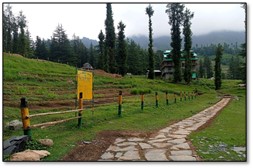
Source:
India’s Drone Imports
- Context: The Centre has recently banned the import of drones with some exceptions.
- The import of any drone either in completely built up (CBU), completely knocked down(CKD) /semi knocked down (SKD) forms are banned.
- Drones exempted from the ban are:
- Drones imported for the purposes of defence and security,
- Drones in CBU, SKD and CKD imported by government entities, educational institutions and government recognised R&D entities,
- Drones for R&D by drone manufacturers and
- Drone components
- These entities can import drones after they acquire import authorisation from the Directorate General of Foreign Trade which would be provided after consultation with the relevant ministry.
- The move is aimed at giving a boost to domestic manufacturing of drones which is seen as a sector that would witness rapid growth this decade (India’s drone market is estimated to account for about 4.25% of the global drone market in FY22).

Source:
Image source:
Lassa fever
- Context: The UK has recently reported one death of the three persons diagnosed with Lassa fever.
- The Lassa fever is a fever spread by rats and it derives its name from the Lassa region in Nigeria where it and was first discovered in 1969.
- It is primarily found in countries in West Africa including Sierra Leone, Liberia, Guinea, and Nigeria where it is endemic.
- A person can become infected if they come in contact with household items of food that is contaminated with the urine or faeces of an infected rat or when they come in contact with a sick person’s infected bodily fluids or through mucous membranes such as the eyes, nose or the mouth.
- However, the transmission of infection does not happen via casual contact such as hugging, shaking hands etc.
- The symptoms range from include mild/slight fever, fatigue, weakness, headache etc to more serious symptoms like bleeding, difficulty breathing, vomiting, facial swelling, pain in the chest etc.
- Death can occur from two weeks of the onset of symptoms, usually as a result of multi-organ failure and the most common complication associated with the fever is deafness (temporary hearing loss or permanent deafness).

Source:
Image source:
Medaram jatara Festival
- Context: The Ministry of Tribal Affairs has sanctioned ₹2.26 Crores for various activities pertaining to Medaram Jathara 2022.
- Sammakka Saralamma Jatara or Medaram Jatara is a tribal festival (Koya tribe) celebrated in the State of Telangana.
- It commemorates the struggle of a mother and daughter, Sammakka and Saralamma, against an unjust law by the reigning rulers.
- It attracts the country's largest number of devotees after Kumbha Mela.
- It is celebrated once in two years in the month of “Magha” (February) on the full moon day where people offer bangaram/gold (jaggery) of a quantity equal to their weight to the goddesses and take holy bath in Jampanna Vagu, a tributary of River Godavari.
- It is celebrated in Madaram, Tadvai Mandal in the district of Mulugu, 100 km from Warangal city.
- It was declared a State Festival in 1996.
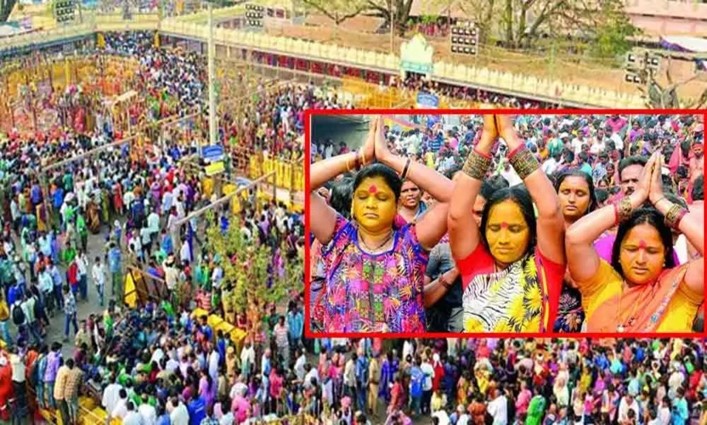
Source:
- For a bird’s eye view of the historic Medaram jatara
- Ministry of Tribal Affairs helps rekindle Telangana’s State Festival of Medaram Jathara with added vigour
Image source:
Metamaterial
- Context: Scientists have developed a material similar to origami metamaterials that crumple rather than tear to take the impact of any accident, when sandwiched in the fender of a car.
- Special class of materials called origami metamaterials combine the Japanese art of paper folding (origami) and the existing material of choice and fold it to obtain desired properties.
- The origami metamaterials are mechanism-based systems. These are manufactured by joining panels along their edges to form ‘creases’ about which the structure locally ‘folds’ or rotates about.
- The benefit is that the observed property does not depend on whether it is made from a sheet of paper, polymer or metal. What matters is that under impact the sheet folds up along the creases.

Source:
The pathology of School closure in India: TH
- Essence: n the previous two years, India has earned the dubious distinction of having the world's second longest COVID-19 pandemic-related school shutdown, after only Uganda. The article delves into the reasons for India's school closures such as- widespread misinformation about COVID's third wave and its impact on children; citizens' experiences with the second wave in India eroded citizens' trust in the government and its institutions; a lack of planning and discussion about the need for objective criteria to reopen schools; and including some societal aspects. While recognising the loss of learning due to the epidemic, the government has suggested several measures in the Union Budget 2022-23. Furthermore, the article offers adequate procedures to guarantee that schools begin operating at full capacity. For the vast majority of low- and middle-income families, great education is their sole hope of breaking free from the cycle of poverty and envisioning a bright future. It is our socio-political obligation to guarantee that all necessary steps are taken to secure the safe return of every kid in the country to school.
Why should you read this article?
- To understand the reasons behind the closure of schools for a long time in India and what were the impacts of the same on education.
- To know steps taken by the government and what could be the way forward to address the issue.
Source:
How Delhi and DC defied the sceptics: HT
Essence: The editorial talks about the accelerating partnership between India and USA with multiple ventures despite the presence of potential crisis of 2021. The difference in ideologies and perceived international projections of India gave way to USA calling India a like-minded partner, a leader in South Asia and the Indian Ocean, a driving force of Quad, an engine for regional growth, a net security provider in the region.
This is due to recognition of the Chinese threat- economic, strategic, regional and India’s potential to withstand such attempts. Asymmetric resources- military, economic could be countered through USA & India partnerships and greater engagements could be enabled through political-industry affiliations and diaspora. The clearcut naming of the Indo-Pacific Strategy is in itself a significant emphasis of centrality of India’s role and its astute diplomacy in these processes.
Why should you read this article?
- To understand the emphasis that USA has laid on India’s centrality in its Indo-Pacific strategy.
- To know about the evolving relationship between India and USA.
Source:
Women friendly Recruitment
Background
- In Men- dominated fields of work, there is need to encourage women participation for an inclusive growth.
- The Delhi Transport Corporation (DTC) has relaxed the eligibility criteria for women who want to join as bus drivers at DTC.
About the Initiative
- Under the new scheme, women need not have any prior experience to apply for the post. As per the current guidelines one needs to have an experience of 3 years to join as a driver in the DTC.
- The women applying need to have a valid heavy vehicle licence issued by the Delhi Transport Authority.
- After passing the fitness and driving test, these females will be provided free on-job training course for 1 month. A stipend of 8000-10000 per month shall also be provided along with the training.
- The scheme wants more women to join the city’s transport force and make roads safer for pedestrians as well as commuters. It will also give a sense of safety to women and young girls who travel late at night.
- The transport department will also consider giving 33 per cent reservation to women in bus driving posts, particularly on the electric variety.

Quote:
“Women belong in all places where decisions are made. It shouldn’t be that women are the exception.”- Ruth Bader Ginsburg
Source:
Image source:
Share the article
Get Latest Updates on Offers, Event dates, and free Mentorship sessions.

Get in touch with our Expert Academic Counsellors 👋
FAQs
UPSC Daily Current Affairs focuses on learning current events on a daily basis. An aspirant needs to study regular and updated information about current events, news, and relevant topics that are important for UPSC aspirants. It covers national and international affairs, government policies, socio-economic issues, science and technology advancements, and more.
UPSC Daily Current Affairs provides aspirants with a concise and comprehensive overview of the latest happenings and developments across various fields. It helps aspirants stay updated with current affairs and provides them with valuable insights and analysis, which are essential for answering questions in the UPSC examinations. It enhances their knowledge, analytical skills, and ability to connect current affairs with the UPSC syllabus.
UPSC Daily Current Affairs covers a wide range of topics, including politics, economics, science and technology, environment, social issues, governance, international relations, and more. It offers news summaries, in-depth analyses, editorials, opinion pieces, and relevant study materials. It also provides practice questions and quizzes to help aspirants test their understanding of current affairs.
Edukemy's UPSC Daily Current Affairs can be accessed through:
- UPSC Daily Current Affairs can be accessed through Current Affairs tab at the top of the Main Page of Edukemy.
- Edukemy Mobile app: The Daily Current Affairs can also be access through Edukemy Mobile App.
- Social media: Follow Edukemy’s official social media accounts or pages that provide UPSC Daily Current Affairs updates, including Facebook, Twitter, or Telegram channels.

